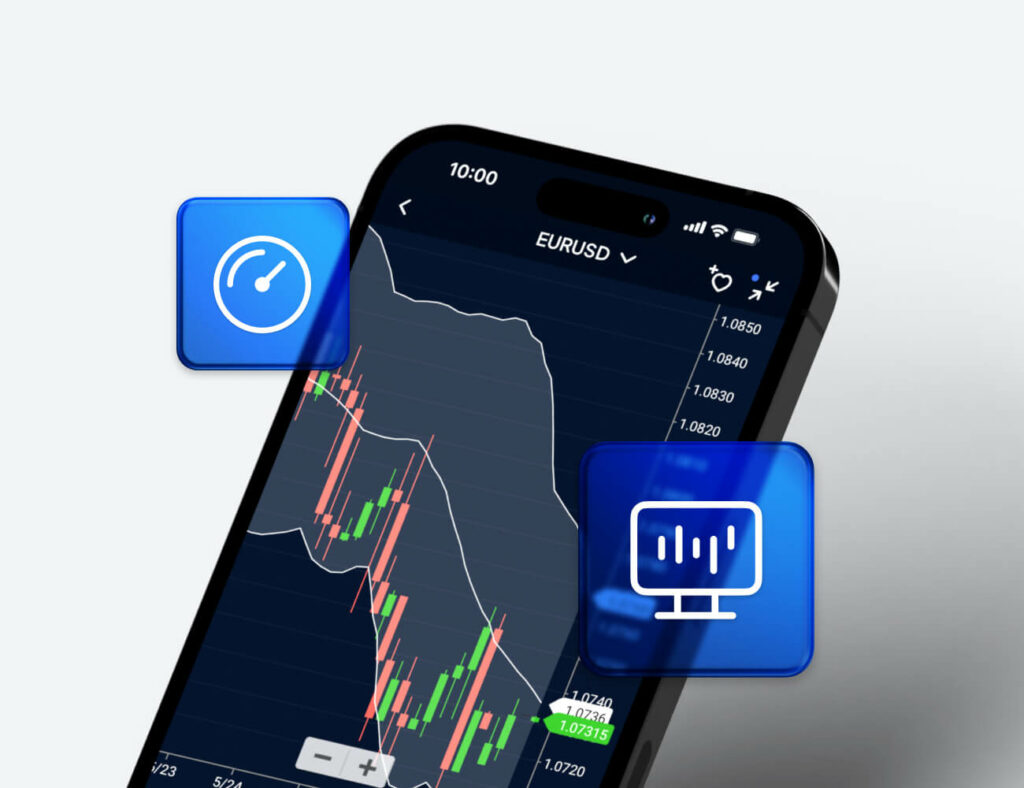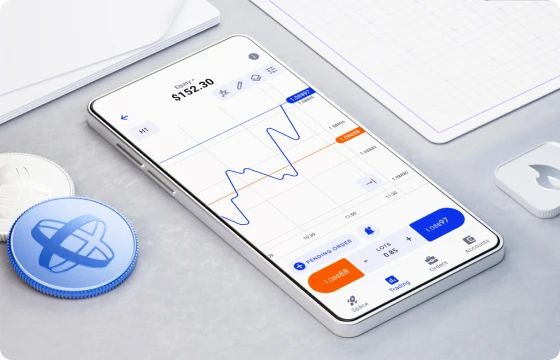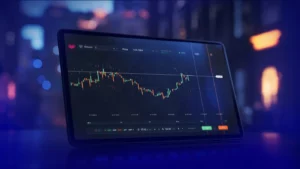A demo trading platform is the first step for anyone serious about understanding financial markets. It creates a safe setting where users can test trades using virtual money while following real market data. For beginners, this removes the fear of losing capital. For professionals, it’s a place to refine methods and check how strategies perform before committing real funds.
What Is a Demo Trading Platform?
A demo trading platform is a digital system that replicates real market conditions without requiring actual deposits. It allows users to trade instruments like forex pairs, commodities, indices, and cryptocurrencies using simulated balances. The goal is to teach order management, position control, and technical chart reading before taking real risk.
These accounts mirror live platforms closely — including spreads, commissions, and price fluctuations — so the user can analyze behavior in different volatility periods. It’s a training ground to build skills in a risk-free environment and a practical way to understand how a broker’s interface functions before moving to live trading.
Main Differences Between Demo and Real Platforms
| Feature | Demo Platform | Real Account |
| Capital | Virtual balance | Actual deposits |
| Risk | None | Real financial exposure |
| Market Data | Real-time or simulated | Real-time |
| Emotions | Minimal | High due to money involvement |
| Execution | May have minor differences | Exact, depending on liquidity |
Why Traders Use Demo Accounts Before Going Live
Using a demo account before trading live is not just a precaution — it’s part of a disciplined trading process. It offers a realistic way to evaluate performance, test systems, and adjust techniques without stress. Below are the main reasons traders begin here.
Reducing Risk While Learning
Financial markets are complex. Spreads, swaps, and price gaps can quickly lead to losses if misunderstood. A demo account removes financial pressure, letting the user focus on concepts like leverage, margin calls, and stop orders. Practicing in a virtual setting prevents emotional decision-making while developing precision in order placement.
List: Core Skills Learned Safely in Demo Mode:
- Reading candlestick formations and trend lines
- Setting stop-loss and take-profit levels
- Calculating position size relative to account equity
- Adjusting leverage to match strategy
- Managing exposure across instruments

Testing Strategies Without Real Losses
Even seasoned traders need a controlled space to evaluate new systems. Markets evolve, and old methods can lose accuracy. Demo trading helps check how strategies behave under changing volatility or interest rate cycles. Testing indicators, scripts, or automated robots is safer when no money is at stake.
Strategy Testing Factors in Demo Trading
| Parameter | Description | Purpose |
| Timeframe | M1 to D1 | Checks consistency across chart periods |
| Instrument | Forex, Metals, Indices | Ensures method works in multiple assets |
| Order Type | Market or Pending | Confirms accuracy in entry points |
| Leverage | 1:100–1:2000 (varies by broker) | Simulates realistic exposure control |
| Trade Volume | 0.01 to 1.00 lots | Tests risk management parameters |
Building Confidence in Market Navigation
Confidence comes from familiarity. A trader who has already executed hundreds of demo trades understands spreads, order execution, and price movement better. This confidence carries over to live trading, reducing hesitation. Practicing regularly also helps build timing discipline — a key difference between consistent and impulsive trading.
Main Confidence-Building Habits:
- Tracking daily results in a journal
- Analyzing mistakes and improving setups
- Testing different market sessions (London, New York, Asia)
- Using both manual and automated orders
- Gradually simulating real-size positions

Key Features to Look for in a Demo Trading Platform
A reliable demo platform must replicate live trading closely. Speed, interface stability, and order accuracy are non-negotiable. Below are the main aspects to evaluate before choosing one:
- Realistic Market Conditions: Price feeds should match live quotes with minimal delays.
- Multiple Instruments: Forex, commodities, indices, and cryptocurrencies to test different markets.
- Adjustable Leverage: Ability to change leverage helps test risk levels.
- Order Execution Simulation: Market, limit, and stop orders should respond as in live trading.
- Performance Analytics: Built-in reports for win ratio, average drawdown, and profit factor.
- Compatibility: Access through desktop, web, and mobile to simulate multi-device trading.
Types of Traders Who Benefit Most from Demo Accounts
Different traders use demo platforms for different goals. While new participants focus on basic order handling, professionals use them to optimize existing systems. The versatility of a demo account makes it valuable at nearly every stage of a trader’s development.
- Beginners Learning the Basics: Those who are new to financial markets rely on demo platforms to grasp key principles like bid-ask spreads, leverage impact, and margin requirements. Without risking funds, they can see how currency pairs respond to economic data or news events. This helps build a solid foundation before introducing real capital.
- Experienced Traders Testing Systems: Professionals regularly create or fine-tune strategies. A demo setup lets them compare execution results between brokers. They may check whether a new Expert Advisor (EA) or algorithm behaves properly during high volatility periods.
- Investors Analyzing Risk Levels: For traders managing diversified portfolios, demo accounts assist in understanding exposure per asset type. It helps estimate drawdowns and recovery potential under stress scenarios.
- Educators and Analysts: Trainers and mentors often use demo platforms to teach real-time market interpretation. It’s easier to show risk control and technical analysis in a simulated space than with live funds at stake.
Demo Accounts vs Live Accounts: What’s the Difference?
Both account types share the same structure and functionality but differ in psychology and execution depth. Demo trading provides skill development, while live trading introduces emotion and true market impact. Understanding these contrasts prevents unrealistic expectations when switching from demo to real.
List: Core Differences Between Demo and Live Trading:
- Virtual funds replace real deposits.
- Slippage and requotes occur less often in demos.
- Market liquidity doesn’t affect demo orders.
- Emotions such as fear or greed are muted.
- Profit or loss carries no financial consequence.
Trading Psychology and Emotions
The emotional gap between simulated and live trading is the most significant difference. When real money is on the line, behavior changes. Fear of loss can interrupt decision-making, while greed may cause overtrading. A trader who performs perfectly in demo mode can face hesitation or impulsive entries in real conditions.
Developing psychological resilience requires gradual exposure to real markets. Some traders deposit minimal capital first to bridge the emotional difference before scaling up. This transition builds mental discipline and highlights areas needing emotional control.
Execution Speed and Slippage
Execution speed is another major factor. In demo trading, orders typically execute instantly because they don’t depend on real liquidity. Live markets, however, rely on broker infrastructure and liquidity providers. During volatile periods, orders may slip — executing at slightly different prices.
Common Mistakes When Using a Demo Account
Many traders misuse demo environments and develop habits that hurt live performance later. A structured approach avoids these errors and keeps results realistic.
Ignoring Trading Costs
A frequent oversight is neglecting trading costs. Spread, swap, and commission charges may seem irrelevant in a demo since no money moves. Yet, these costs shape profitability. Without factoring them in, a strategy that appears profitable on paper may underperform once applied live.
To stay realistic, traders should calculate average spread per instrument, note overnight swap rates, and record effective cost per trade. This practice provides a closer view of actual conditions.
Overtrading Without Risk Consideration
Virtual funds create a false sense of security. Many users place excessive trades, ignoring exposure limits. Such behavior distorts performance metrics. In real conditions, large volume or multiple open positions increase margin requirements and emotional pressure.
Creating a daily trade limit or equity drawdown threshold in demo mode trains discipline early. A risk plan should specify the maximum number of trades, lot size, and acceptable loss per day.
Unrealistic Position Sizes
A demo balance often starts much larger than what a trader intends to fund in real life. Opening oversized trades becomes tempting, yet it produces inaccurate performance data. Position sizing must match the real equity planned for live use.
For example, if someone plans to deposit $1,000 later, the demo should use the same capital and leverage settings. This alignment provides a true picture of what results might look like under real market pressure.
How Long Should You Stay on a Demo Account?
There is no fixed duration. It depends on progress, discipline, and consistency. Some traders adapt quickly within weeks, while others take months before feeling ready to transition. The key metric is stable performance rather than time spent.
Learning Curve Expectations
Beginners typically need enough time to master:
- Order execution and platform navigation
- Technical and fundamental analysis basics
- Proper leverage and margin usage
- Emotional balance during trades
The process should continue until mistakes become minimal and profits appear consistently over several weeks of simulated trading.
Signs You’re Ready to Go Live
A trader may consider live trading once these points are met:
- Consistent results for at least one to two months
- Defined risk management plan per position
- Awareness of trading costs and margin impact
- Ability to stop trading after reaching daily limits
- Confidence in executing under different market conditions
Transitioning should be gradual — start with small deposits, track emotions, and adjust position sizes slowly. The objective is to transfer discipline from demo to live conditions smoothly.
Frequently Asked Questions
Is a demo account identical to a live one?
Not entirely. Although pricing and tools are the same, real execution may involve slippage, and emotions play a stronger role in live trading.


